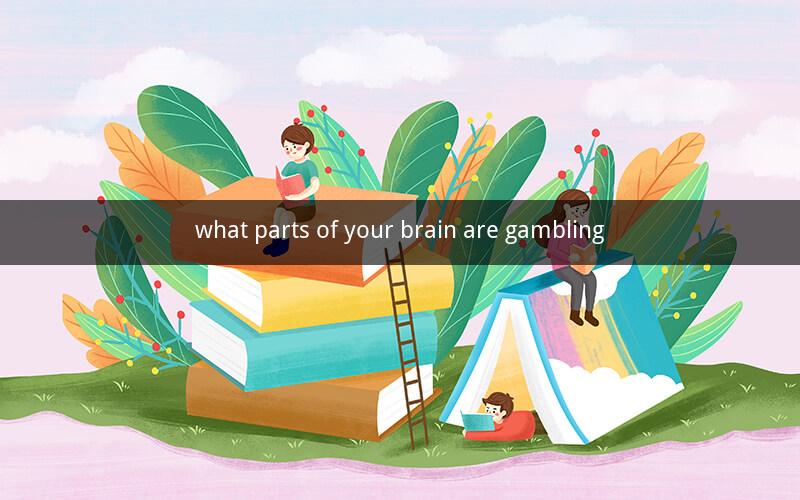
Understanding the Brain's Role in Gambling
Table of Contents
1. Introduction to the Brain and Gambling
2. The Dopamine System and Reward
3. The Prefrontal Cortex and Decision Making
4. The Amygdala and Emotional Response
5. The Striatum and Reward Prediction
6. The Basal Ganglia and Habit Formation
7. The Insula and Social Decision Making
8. The Hypothalamus and Survival Instincts
9. The Cerebellum and Motor Coordination
10. Conclusion
1. Introduction to the Brain and Gambling
Gambling is an activity that has been captivating humans for centuries. It involves risk, chance, and the potential for reward. While the act of gambling itself is simple, the complex interplay of neural processes in the brain makes it a fascinating subject of study. This article delves into the various parts of the brain that are involved in gambling behavior.
2. The Dopamine System and Reward
The dopamine system is crucial for the experience of pleasure and reward. When a person wins a bet, the brain releases dopamine, creating a sense of euphoria and reinforcing the behavior. The ventral tegmental area (VTA) and nucleus accumbens are key regions that play a role in this process. These areas are activated by rewarding stimuli, leading to increased motivation to engage in gambling.
3. The Prefrontal Cortex and Decision Making
The prefrontal cortex is responsible for executive functions, including decision-making, planning, and impulse control. When it comes to gambling, this region helps assess the risks and rewards of each bet. However, individuals with impaired prefrontal function may be more prone to impulsive and risky gambling behavior.
4. The Amygdala and Emotional Response
The amygdala is a brain region involved in processing emotions, particularly fear and pleasure. In the context of gambling, the amygdala plays a role in the emotional response to winning or losing. For example, the amygdala may be more active when a person experiences a big win, leading to increased excitement and the desire to continue gambling.
5. The Striatum and Reward Prediction
The striatum is a region involved in predicting rewards and planning actions. It receives input from various brain regions and helps integrate information to make decisions. In gambling, the striatum plays a role in evaluating the potential rewards of each bet and guiding the individual's choice.
6. The Basal Ganglia and Habit Formation
The basal ganglia are a group of structures involved in habit formation and motor learning. They are crucial for the development of gambling habits. The striatum, which is part of the basal ganglia, helps encode the actions associated with gambling and reinforces these behaviors through dopamine release.
7. The Insula and Social Decision Making
The insula is a brain region involved in processing social information and emotions. In the context of gambling, the insula may play a role in social decision-making, as individuals may be influenced by the behavior of others. The insula also helps process the emotional aspects of gambling, such as guilt or shame.
8. The Hypothalamus and Survival Instincts
The hypothalamus is a brain region involved in regulating survival instincts, such as hunger and thirst. In gambling, the hypothalamus may be activated by the anticipation of rewards, leading to increased motivation to engage in gambling behavior.
9. The Cerebellum and Motor Coordination
The cerebellum is responsible for motor coordination and balance. While its role in gambling may not be as direct as other brain regions, it may contribute to the overall experience of gambling by ensuring smooth and coordinated movements during the activity.
10. Conclusion
The act of gambling involves a complex interplay of neural processes in the brain. The dopamine system, prefrontal cortex, amygdala, striatum, basal ganglia, insula, hypothalamus, and cerebellum all play a role in shaping gambling behavior. Understanding these brain regions can help us better comprehend the psychological and physiological aspects of gambling.
---
Questions and Answers
1. What is the primary neurotransmitter involved in the experience of pleasure and reward during gambling?
- The primary neurotransmitter involved is dopamine.
2. Which brain region is responsible for executive functions, including decision-making and impulse control?
- The prefrontal cortex is responsible for these functions.
3. What is the role of the amygdala in the emotional response to gambling?
- The amygdala processes emotions, particularly fear and pleasure, during gambling.
4. How does the striatum contribute to the evaluation of potential rewards in gambling?
- The striatum helps integrate information to evaluate the potential rewards of each bet.
5. What is the role of the basal ganglia in the development of gambling habits?
- The basal ganglia, particularly the striatum, encode actions associated with gambling and reinforce these behaviors.
6. How does the insula influence social decision-making in gambling?
- The insula processes social information and emotions, potentially influencing social decision-making in gambling.
7. What is the role of the hypothalamus in gambling behavior?
- The hypothalamus regulates survival instincts, such as hunger and thirst, which may be activated by the anticipation of rewards in gambling.
8. How does the cerebellum contribute to the experience of gambling?
- The cerebellum ensures smooth and coordinated movements during gambling, contributing to the overall experience.
9. Can brain imaging techniques help understand the neural basis of gambling?
- Yes, brain imaging techniques like fMRI can help understand the neural basis of gambling by showing which brain regions are active during gambling behavior.
10. Are there any genetic factors that contribute to the risk of developing gambling disorders?
- Yes, there are genetic factors that can contribute to the risk of developing gambling disorders, although the exact genes involved are not yet fully understood.